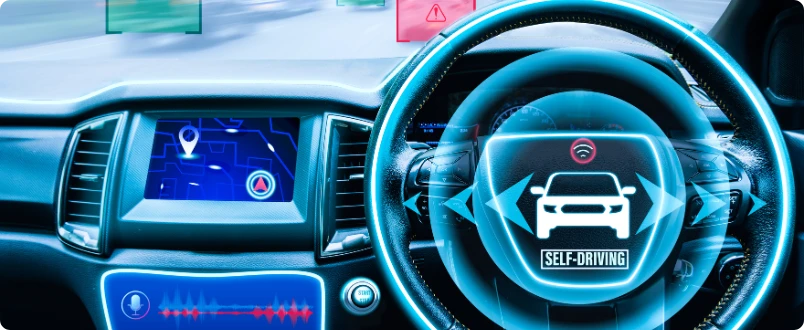After years of inflation shocks and steep interest rate hikes, U.S. consumer lending is in a cautious but opportunity-rich phase. Household credit balances remain elevated well above pre-pandemic levels driven by credit card and personal loan growth, while mortgage and auto demand are sensitive to even small rate changes. Total consumer credit outstanding has been steadily increasing, but lenders are balancing growth ambitions with sharper credit discipline.
YOY growth is diverging, auto and credit card loans continue to rise, personal loans are resilient, while mortgage origination has slowed sharply due to sustained higher rates. The 30-year fixed mortgage rate remains in the mid-to-high single digits, cooling purchase demand and making refinancing unattractive. This slowdown has ripple effects on related lending products, from Home Equity Lines of Credit (HELOC) to home improvement financing.
FICO scoring remains a core part of underwriting, but increasingly lenders recognize its limits. Thin-file borrowers, gig workers, and younger demographics require more nuanced scoring that integrates alternative and behavioral data.
Delinquency trends highlight the divide: prime lending remains stable, but subprime auto and credit card portfolios show rising delinquency rates, particularly among younger borrowers.
Regional variance is emerging, Sunbelt housing markets show sharper mortgage stress, while Midwest auto finance portfolios reveal different delinquency stage patterns, proving lending performance is geographically segmented.
Lender Behaviour Under Current Conditions

Banks and credit unions are navigating three converging pressures:
- Higher funding costs that compress net interest margins.
- Selective risk appetites as delinquencies edge up in subprime segments and among younger borrowers.
- Rising competition from fintechs and marketplace lenders, such as SoFi, who are faster to market, more agile in deploying alternative data, and strong in capturing student loan and personal loan refinancing segments.
Analysts note that lenders who have shifted to micro-segmentation, real-time underwriting, and data-rich credit assessment are capturing market share, even in slower credit environments.
Practical Implications for Today’s Operations

Operationally, the winners are tightening their risk controls while also accelerating decision-making. Key tactics include:
- Embedding alternative data sources (utility payments, payroll APIs, rental history) alongside bureau data.
- Moving to modular decision engines that can be adjusted by business teams.
- Using MLOps to govern and refresh models quickly. Leading players refresh models quarterly, not annually.
- Frequent A/B underwriting experiments allow lenders to make measurable improvements without betting the entire portfolio on a single update.
- AI compliance is now critical: U.S. regulators (including under the U.S. AI Act) demand explainable, bias-tested, and auditable models.
Where the Growth Pockets Are?

- Automotive finance – especially subprime lending, where risk management and compliance discipline are essential.
- Point-of-sale financing for e-commerce and in-store retail.
- Niche small-business lending, where real-time cash flow insights mitigate risk.
- Neglected growth areas like student loan refinancing, green lending, and Buy Here Pay Here (BHPH) auto finance – currently underserved by banks but growing in demand.
These verticals offer attractive risk-adjusted returns, especially if paired with tailored pricing and frictionless digital experiences. McKinsey and other advisory houses flag targeted, segment-level plays as higher-return and lower-execution-risk than broad credit expansion.
Regulatory Priorities
The Consumer Financial Protection Bureau (CFPB) and the Office of the Comptroller of the Currency (OCC) are clear: Artificial Intelligence (AI)– and Machine Learning (ML)–driven lending must be explainable, bias-tested, and well-documented. Banks are expected to maintain audit trails, override logs, bias test results, and vendor validation records. Treating credit models as “living products” – with Continuous Integration/Continuous Delivery (CI/CD) pipelines, monitoring Service Level Agreements (SLAs), and rollback protocols – speeds up regulator reviews and minimizes operational risk.
What U.S. Lenders Must Do Today to Grow?

Based on analyst consensus and on-the-ground examples from high-performing lenders:
- Go deeper into segmentation
- Move beyond “prime vs. subprime” to identify micro-segments where risk is acceptable but underserved – such as gig economy workers with strong transaction history but thin credit files.
- Speed up with confidence
- Achieve straight-through-processing (STP) rates above 70% in targeted portfolios by integrating real-time bureau pulls, alt-data verification, and automated rule handling.
- Own the borrower experience
- Build digital journeys that make credit feel personalised: pre-filled applications, instant eligibility feedback, and proactive cross-sell prompts.
- Analysts report that lenders who embed “next best offer” engines see 10-15% uplift in cross-sell conversion within six months.
- Invest in MLOps + Model Refresh Cadence
- Refresh credit scoring models quarterly (not annually) to keep them tuned to shifting macro conditions.
- Automate retraining pipelines and version control to shorten time-to-market for new rules.
- Expand product adjacencies
- Bundle credit with value-added services: cash flow management tools for SMBs, or insurance/extended warranty for retail lending.
- Cross-sell into existing borrower bases – cheaper than acquiring net-new customers in today’s high Customer Acquisition Cost (CAC) environment.
- Strengthen data partnerships
- Use payroll, tax, and utility APIs to boost credit approval rates without materially increasing risk.
- Partnerships with BNPL providers or e-commerce platforms can surface new prime borrowers before they hit mainstream bureaus.
- Optimize for CLTV, not just originations
- Shift KPIs from loan volume to customer lifetime value (CLTV) – measuring profitability over the entire borrower relationship encourages smarter, sustainable growth.
Related Read: Embracing the Future: Technology Trends for Modernizing Digital Lending
Bottom Line
The 2025 U.S. lending market is not about blanket expansion – it’s about precision growth. Lenders who sharpen their segmentation, speed up their decisions, and own the borrower journey – while embedding governance and model agility – can grow profitably even in a higher-rate, more regulated environment.
How Nucleus Software’s Precision Technology Enables Banks in US to Scale Sustainably?

Nucleus Software brings a powerful edge to the 2025 U.S. lending landscape through deep BFSI domain expertise, explainable AI capabilities, and agile, modern development practices. With over four decades of lending and transaction banking experience, the firm has built global enterprise technology platforms- FinnOne Neo® and FinnAxia® – engineered to deliver precision segmentation, AI-driven credit scoring, and micro-segmentation logic that adapts in real time.
These strengths are amplified by their adoption of Acceptance Test-Driven Development (ATDD) and Continuous Integration/Continuous Delivery (CI/CD), enabling faster release cycles and tight alignment between user needs and software delivery. Configurable Business Engines empower lenders to rapidly launch, tweak, and scale lending products without hardcoding -dramatically reducing time-to-market and enabling faster response to market shifts. AI-powered decision engines, coupled with MLOps pipelines, continuously retrain and refresh models, ensuring bias testing, explainability, and regulatory compliance.
Nucleus turns credit scoring into a competitive advantage by blending the intelligence of AI with the agility of Lean IT and the clarity of Hoshin Kanri strategic planning. Our approach treats credit models as dynamic, “living products”- constantly refreshed, closely monitored, and always aligned with your business goals. With version-controlled pipelines, you can track every update; rollback safety ensures zero downtime when changes are needed; and full auditability keeps regulators confident. The result? Faster, smarter, and fully compliant lending decisions that adapt in real time to market shifts.
This synergy of AI, automation, and domain expertise uniquely positions Nucleus to help U.S. lenders accelerate straight-through processing, deploy hyper-personalized credit products, and meet stringent regulatory mandates – all while scaling profitably and sustainably.






 Lending
Lending
 Transaction Banking
Transaction Banking Financial Inclusion
Financial Inclusion




























